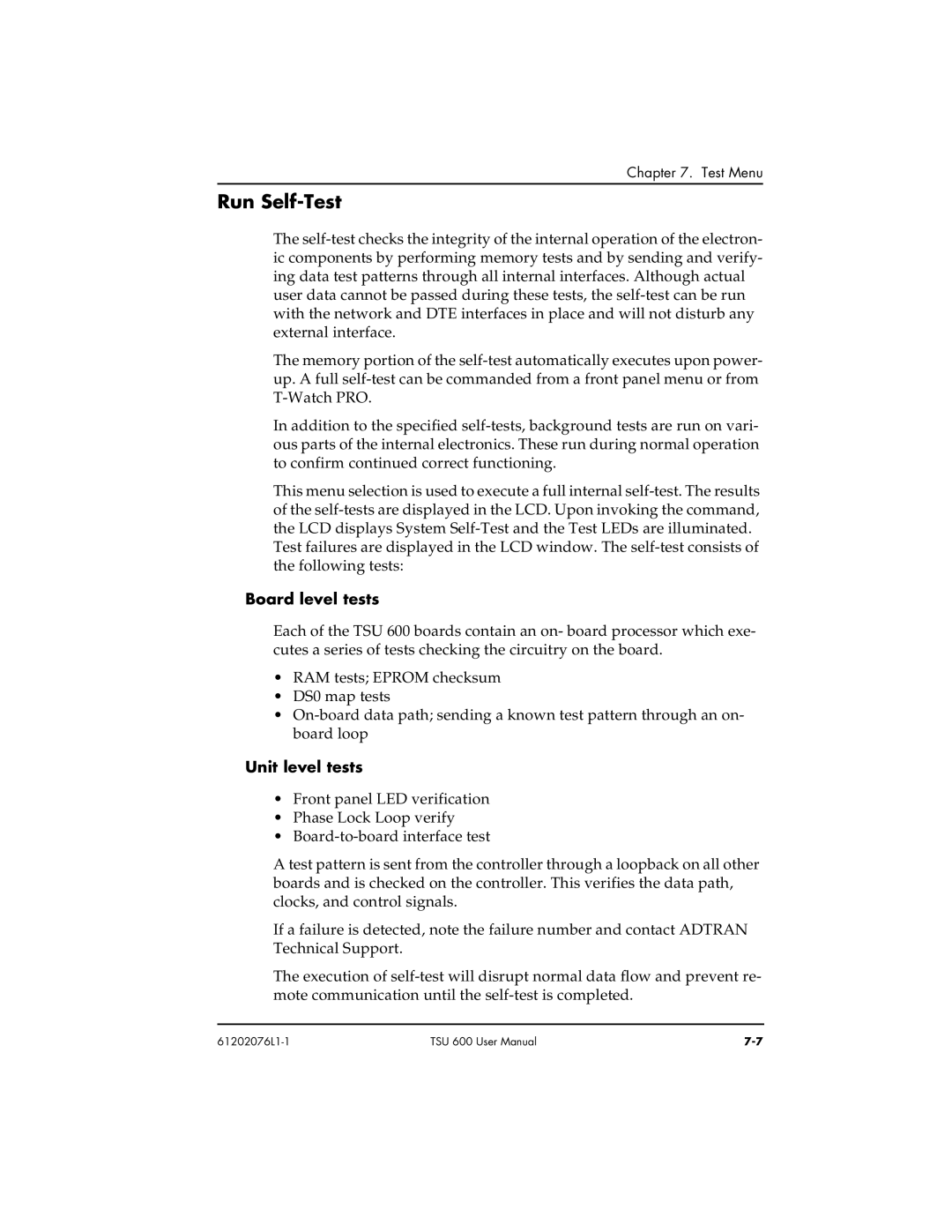Chapter 7. Test Menu
Run Self-Test
The self-test checks the integrity of the internal operation of the electron- ic components by performing memory tests and by sending and verify- ing data test patterns through all internal interfaces. Although actual user data cannot be passed during these tests, the self-test can be run with the network and DTE interfaces in place and will not disturb any external interface.
The memory portion of the self-test automatically executes upon power- up. A full self-test can be commanded from a front panel menu or from T-Watch PRO.
In addition to the specified self-tests, background tests are run on vari- ous parts of the internal electronics. These run during normal operation to confirm continued correct functioning.
This menu selection is used to execute a full internal self-test. The results of the self-tests are displayed in the LCD. Upon invoking the command, the LCD displays System Self-Test and the Test LEDs are illuminated. Test failures are displayed in the LCD window. The self-test consists of the following tests:
Board level tests
Each of the TSU 600 boards contain an on- board processor which exe- cutes a series of tests checking the circuitry on the board.
•RAM tests; EPROM checksum
•DS0 map tests
•On-board data path; sending a known test pattern through an on- board loop
Unit level tests
•Front panel LED verification
•Phase Lock Loop verify
•Board-to-board interface test
A test pattern is sent from the controller through a loopback on all other boards and is checked on the controller. This verifies the data path, clocks, and control signals.
If a failure is detected, note the failure number and contact ADTRAN Technical Support.
The execution of self-test will disrupt normal data flow and prevent re- mote communication until the self-test is completed.

